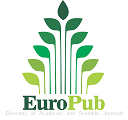Efisiensi dan Nilai Ekonomi Daging Sapi untuk Potongan Pasar Tradisional Berdasarkan Potongan Komersial yang Berbeda
Abstract
Beef consumers in Indonesia are generally more familiar with the term of traditional processed meat such as rendang and semur compared to the standard commercial cuts. Those terms of beef cuts are usually used in meat trading as a communication language. The study aimed to evaluate the yield and economic value of traditional beef cuts including rendang, semur and tetelan derived from different types of standard commercial cuts. A total of 298.7 kg of beef consisting of 60 commercial cuts of topside and blade were used in this study. Each of commercial cuts was then broken down into common traditional common market name such as rendang, semur and tetelan cuts. The observed parameters consisted of the weights and percentages of the cuts and their economic values, including the cost of goods manufactured (COGM). The differences between topside and blade cuts in their yield and economic value were compared by t-test analysis using the R statistical program version 4.0.0. The results showed that the weight of topside cut was significantly lower than that blade (P <0.05). However, the topside cut produced significantly higher amount and percentage of rendang and significantly lower amount and percentage of semur and tetelan compared to the blade (P<0.05). Economically, the value of blade cut was higher than that of topside for each kg of the traditional beef cuts (rendang, semur, tetelan) produced. It could, therefore, be concluded that the topside cut is economically more efficient than the blade in producing the traditional beef cuts.















